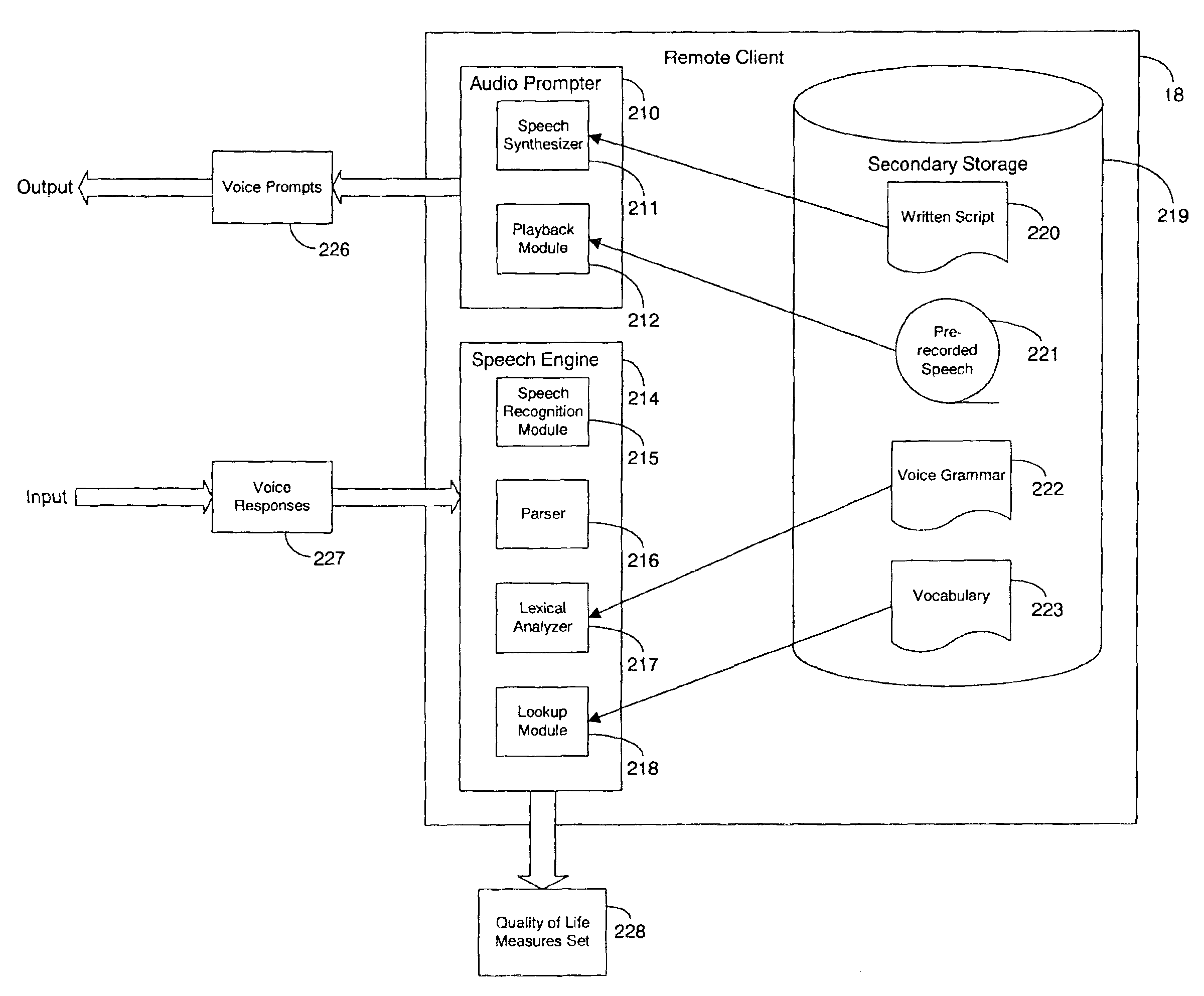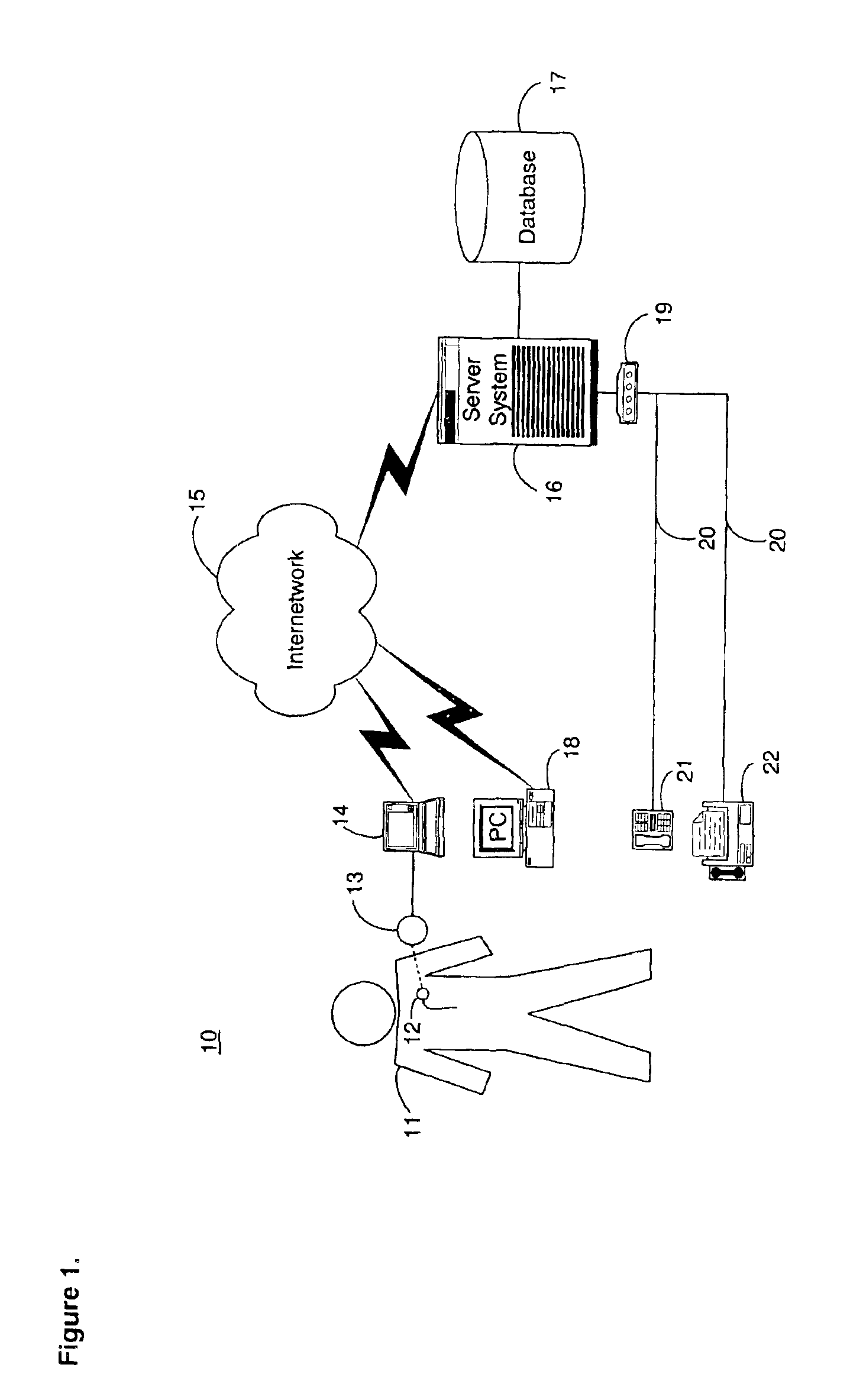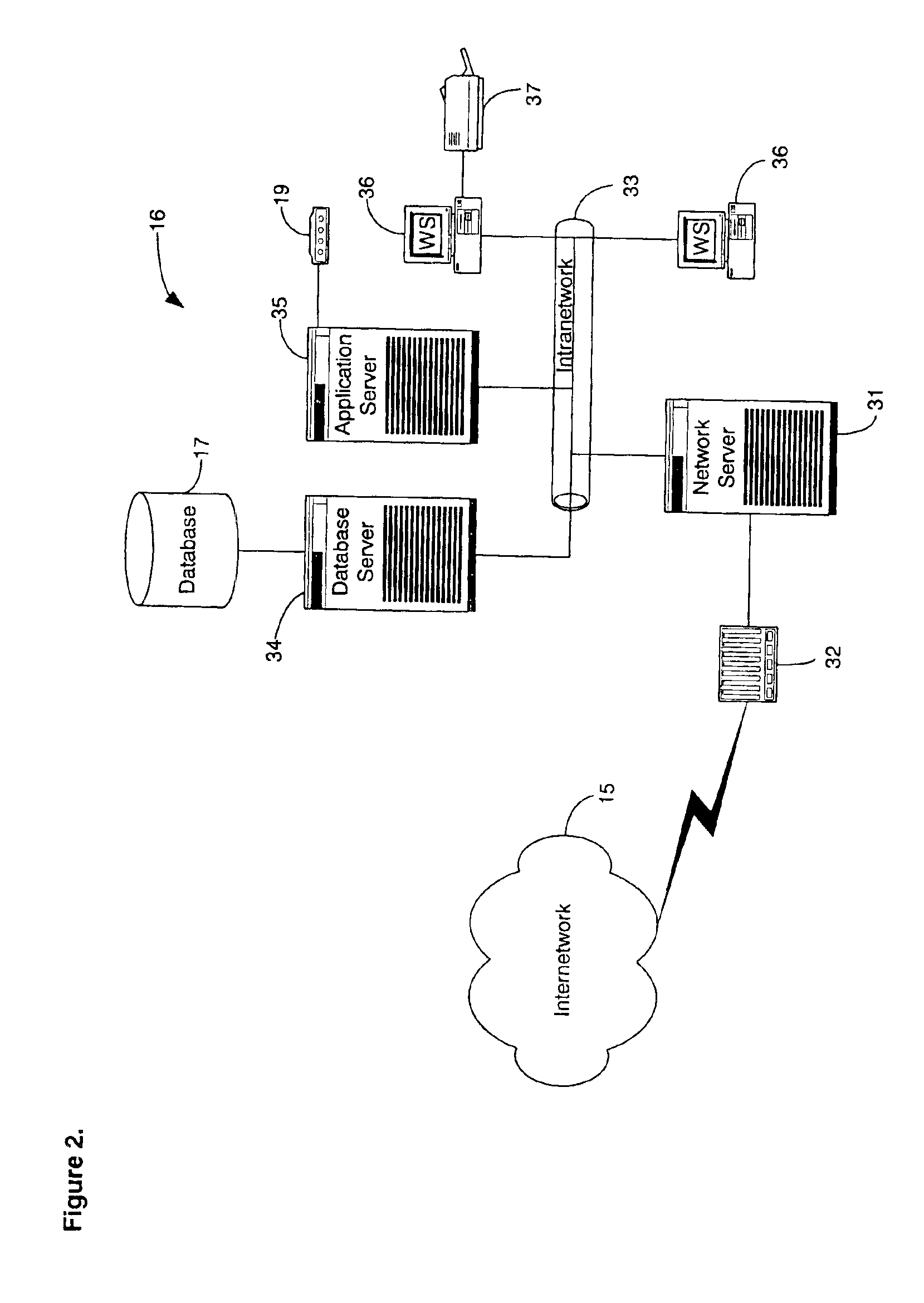System and method for providing feedback to an individual patient for automated remote patient care
a patient and patient technology, applied in the field of automated data collection and analysis, can solve the problems of fatigue, dizziness, fainting, sudden cardiac death (scd), and require significant physician time and detailed, and achieve the effects of facilitating the gathering, storage and analysis, reducing the burden on physicians and trained personnel to evaluate the volume of information, and reducing the burden on patients
- Summary
- Abstract
- Description
- Claims
- Application Information
AI Technical Summary
Benefits of technology
Problems solved by technology
Method used
Image
Examples
Embodiment Construction
FIG. 1 is a block diagram showing a system 10 for automated collection and analysis of patient information retrieved from an implantable medical device for remote patient care in accordance with the present invention. A patient 11 is a recipient of an implantable medical device 12, such as, by way of example, an IPG or a heart failure or event monitor, with a set of leads extending into his or her heart. The implantable medical device 12 includes circuitry for recording into a short-term, volatile memory telemetered signals, which are stored as a set of collected measures for later retrieval.
For an exemplary cardiac implantable medical device, the telemetered signals non-exclusively present patient information recorded on a per heartbeat, binned average or derived basis and relating to: atrial electrical activity, ventricular electrical activity, minute ventilation, patient activity score, cardiac output score, mixed venous oxygenation score, cardiovascular pressure measures, time o...
PUM
 Login to View More
Login to View More Abstract
Description
Claims
Application Information
 Login to View More
Login to View More - R&D
- Intellectual Property
- Life Sciences
- Materials
- Tech Scout
- Unparalleled Data Quality
- Higher Quality Content
- 60% Fewer Hallucinations
Browse by: Latest US Patents, China's latest patents, Technical Efficacy Thesaurus, Application Domain, Technology Topic, Popular Technical Reports.
© 2025 PatSnap. All rights reserved.Legal|Privacy policy|Modern Slavery Act Transparency Statement|Sitemap|About US| Contact US: help@patsnap.com



